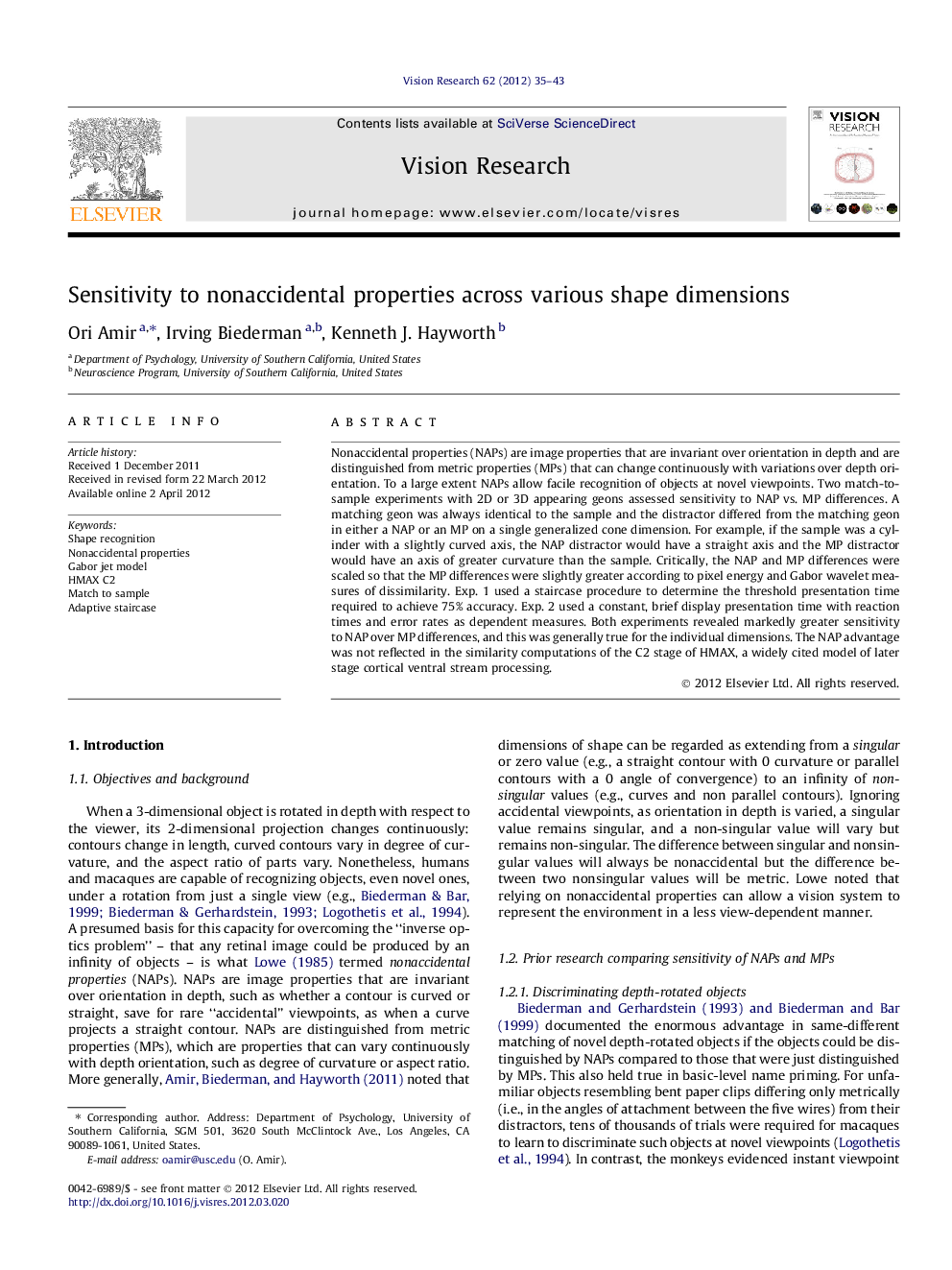| Article ID | Journal | Published Year | Pages | File Type |
|---|---|---|---|---|
| 6203679 | Vision Research | 2012 | 9 Pages |
Nonaccidental properties (NAPs) are image properties that are invariant over orientation in depth and are distinguished from metric properties (MPs) that can change continuously with variations over depth orientation. To a large extent NAPs allow facile recognition of objects at novel viewpoints. Two match-to-sample experiments with 2D or 3D appearing geons assessed sensitivity to NAP vs. MP differences. A matching geon was always identical to the sample and the distractor differed from the matching geon in either a NAP or an MP on a single generalized cone dimension. For example, if the sample was a cylinder with a slightly curved axis, the NAP distractor would have a straight axis and the MP distractor would have an axis of greater curvature than the sample. Critically, the NAP and MP differences were scaled so that the MP differences were slightly greater according to pixel energy and Gabor wavelet measures of dissimilarity. Exp. 1 used a staircase procedure to determine the threshold presentation time required to achieve 75% accuracy. Exp. 2 used a constant, brief display presentation time with reaction times and error rates as dependent measures. Both experiments revealed markedly greater sensitivity to NAP over MP differences, and this was generally true for the individual dimensions. The NAP advantage was not reflected in the similarity computations of the C2 stage of HMAX, a widely cited model of later stage cortical ventral stream processing.
⺠Nonaccidental properties (NAPs) are invariant to 3D rotations. ⺠Metric properties (MPs) vary continuously with rotation in depth. ⺠NAP sensitivity â«Â MP sensitivity in match-to-sample tasks. ⺠The greater NAP sensitivity held for individual generalized cone dimensions. ⺠HMAX C2 failed to predict the greater sensitivity of NAP vs. MP differences.
